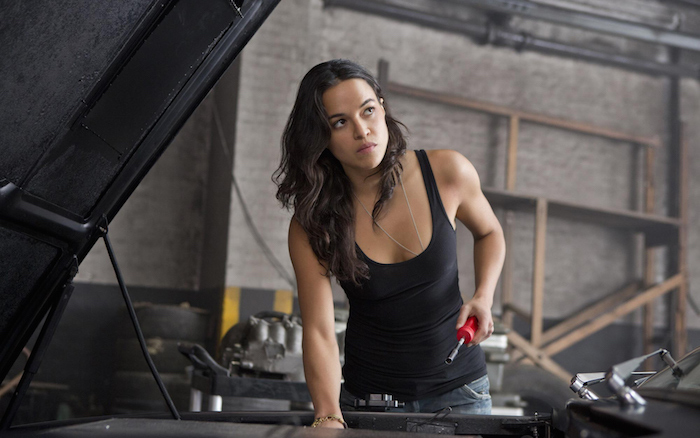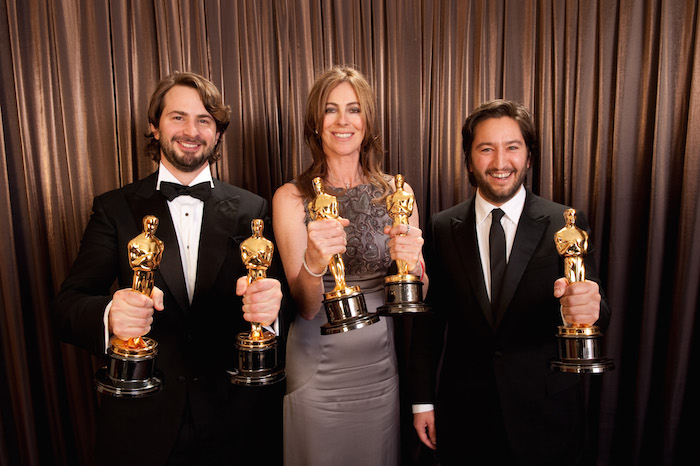Think you see a lot of men on television? You’re right, you do. Women in the film industry have always been discriminated against. From underpaying lead roles to a lack of accredited female directors, the industry is firing up, and not just in front of the camera.

Michelle Rodriguez is the American actress and screenwriter most known for her role as Letty in The Fast and Furious franchise and her debut role as Diana Guzman in the 2000 movie, Girlfight. But besides her acting success, she is breaking through as a role model for women all around the world as she stands up for women in the film industry.
Last week, Rodriguez posted on Instagram a collage of photos from the development of the Fast And Furious 8 film which included selfies on set with co-stars like Vin Diesel. The caption however, was what caught the media’s eye.
While the caption caused a bit of controversy in the media, Rodriguez has a point. Michelle is the only female cast member who has been a part of the franchise from beginning to present. Only one other female cast member is a part of the series which is Jordana Brewster who has played a role in the franchise for five of the ten furious movies.
After Rodriguez’s post, Vin Diesel posted a feel-good video to his 41 million Instagram followers of himself and Rodriguez hugging as she talks about his support for women in the industry and reassures him: “If I ever posts anything, it’s not you I’m talking about,” Vin laughs as he says “of course it’s not me you’re talking about!”.
While you cannot help but smile at Diesel and Rodriguez’s friendship, it paints a larger picture of women in the film industry. For decades, if not centuries, gender discrimination has been severely evident in most workplace industries. The film industry is known to have gender segregation play out at all levels on and off the camera. According to the Media, Diversity and Social Change Initiative completed by Institute for Diversity and Empowerment at Annenberg (IDEA), across 11,306 speaking characters that were analysed in the study, 66.5% were male and 33.5% were female. This calculated into a gender ratio of seeing two males for every one female on screen. All in all, female characters fill only 28.7% of all speaking roles in film and it’s just not enough.
While a shortage of females is quite clear on screen, the ladies behind the cameras are not out of the woods with gender segregation either. In the history of the Academy Awards, only one female has won the Best Directing Award. Kathryn Bigelow is the very first – and only – woman in history to win the best director award at the Oscars for the war film The Hurt Locker (2008).
The IDEA also continued their study behind the camera and found that of the 4,284 directors that were evaluated in the study, only 3.4% of all film directors were female with broadcast having the highest percentage of directors (17.1%) and streaming the lowest (11.8%).

That’s not to say that there haven’t been any efforts to combat Hollywood’s diversity problem. At the beginning of 2016, Ryan Murphy started Half, a foundation within his 20th Century Fox TV-based production company, with the stated goal of having fifty percent of all director slots on his shows filled by women, people of colour and members of the LGBT community. Even more importantly, Half works to connect candidates with mentors within the film and tv industry. It’s an important step towards tackling the lack of roles behind the scenes in directorial, production and other creative capacities filled by women.
Overall, while women like Michelle Rodriguez and Kathryn Bigelow are proving to all women that we can do better, it continues to emphasise the question of whether it is enough. We here at FIB can only encourage women in the film industry. While fighting the patriarchy is hard, it is not impossible to conquer. Go girl power!







